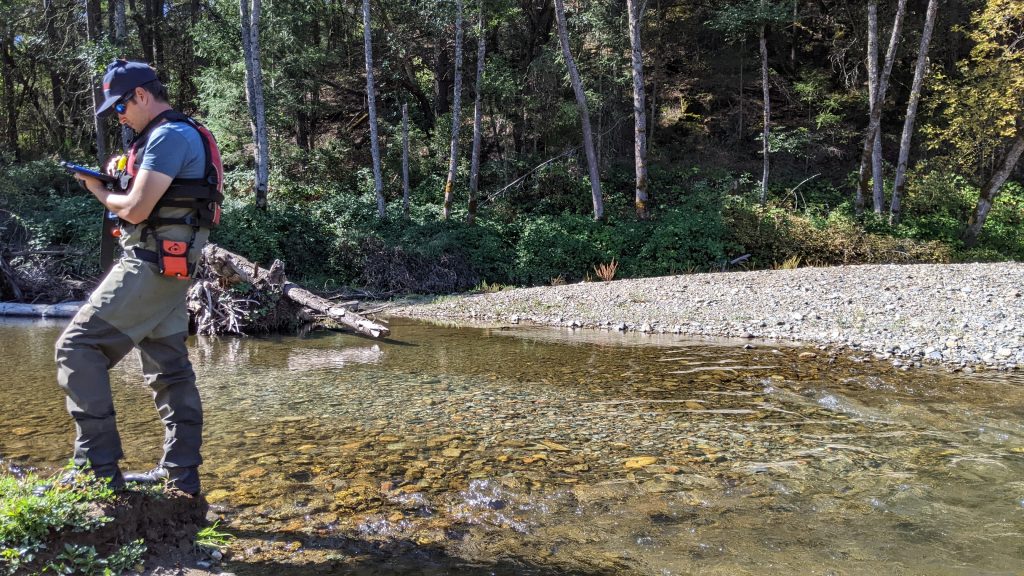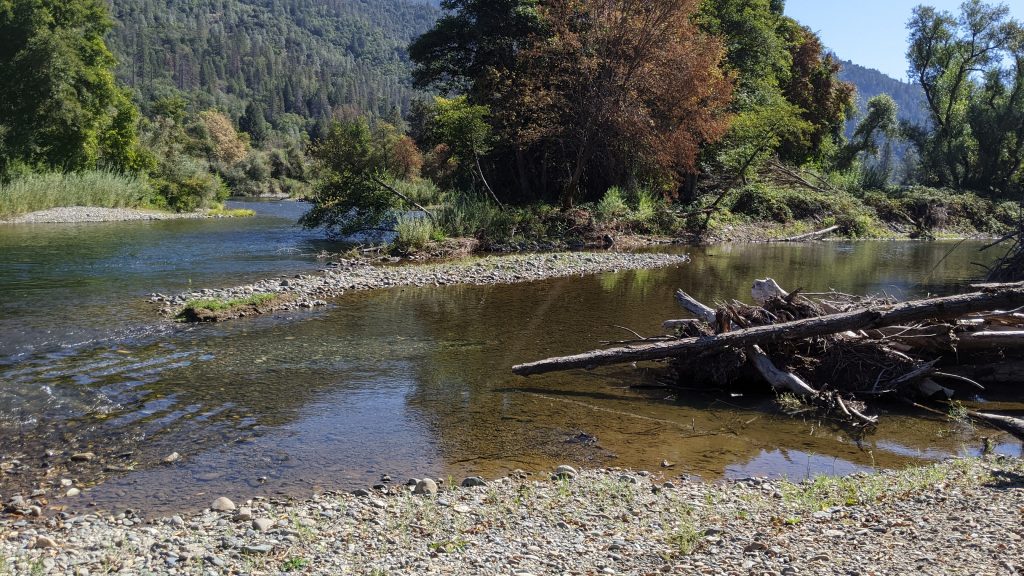
Crews have been mapping gravel bars and fine sediment deposits on the Trinity River these past few weeks. The mapping was last done in 2013, and the updated measurements will indicate progress the Program has made in restoring these features on the Trinity River. Prior research on the Trinity River and elsewhere has shown the quantity of habitat for juvenile salmon rearing increases where sediment bars are present in the river – the more bars, the higher the ability for producing salmon. Results of the survey will be published in the coming months.
[Photo Credit: Jeanne McSloy, TRRP/Reclamation]Gravel Bar Mapping Surveys

During the month-long survey, crews witnessed salmon actively spawning in areas recently rehabilitated by the Program. As shown in the photo to the left, a salmon redd is located where the riverbed is more brightly colored, which happens as a result of when periphyton is removed from river rocks as a salmon builds its nest. This particular redd is located at the lower end of Chapman Ranch, a channel rehabilitation site that was completed in 2021. As the survey crew approached the redd, a male salmon was found guarding the nest. The female salmon was not present and had either completed her spawning at this location and moved on to build another redd elsewhere (salmon sometimes construct several redds in one spawning season) or perished after constructing this one. Either way, the male was left to guard this nest from other fish that may attempt to construct their nest near enough to this one to damage it.
[Photo Credit: Todd Buxton, TRRP/Reclamation]As the mapping work proceeded, the male salmon moved from the redd to a deep area that had scoured around the constructed wood jam shown in the picture (below). The male used the deep water and its overhead wood as protective cover and did not return to guarding the nest until the team moved far enough away for the fish to return to guard duty.

Wood placement in rehabilitation projects and natural recruitment of logs from adjacent forests is an important element for restoring the Trinity River. Wood provides cover for fish, creates backwater areas for migrating fish, and helps river flows sort sediments for use by species that require mainly gravel (salmon for spawning) or finer sediments (sands for lamprey rearing), or a mixture of both (macroinvertebrates). It gives our team an immense amount of pride witnessing these efforts work in the river and for its inhabitants.
[Photo Credit: Todd Buxton, TRRP/Reclamation]